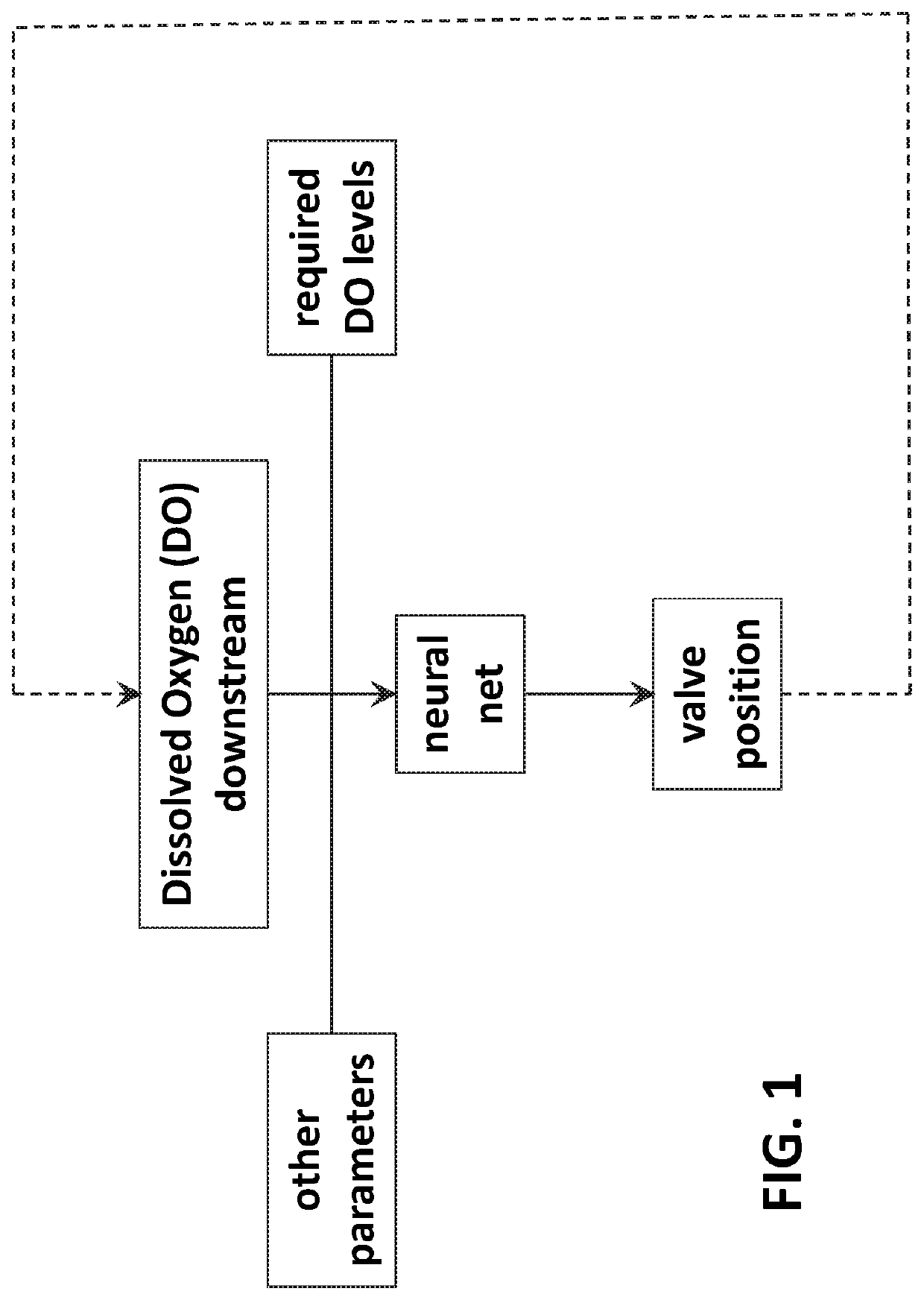System and method for closed-loop dissolved oxygen monitoring and control
a dissolved oxygen and monitoring system technology, applied in the direction of ignition automatic control, instruments, nature of treatment water, etc., can solve the problems of difficult to remove all, difficult to monitor the effect of oxygen-poor hypolimnion, and concentrated blooms and other organic debris, etc., to achieve the effect of minimizing efficiency loss
- Summary
- Abstract
- Description
- Claims
- Application Information
AI Technical Summary
Benefits of technology
Problems solved by technology
Method used
Image
Examples
Embodiment Construction
[0032]In an exemplary embodiment, closed-loop dissolved oxygen monitoring and control is applied with respect to the High Rock Development located in Davie, Davidson, and Rowan counties, North Carolina on the Yadkin River and opened in 1927. The reservoir is impounded by a 936-foot-long, 101-foot-high dam that comprises (1) a 58-foor long non-overflow section, (2) a 550-foot-long gated spillway section with ten 45-foot-wide by 30-foot-high stoney gates, (3) a 178-foot-long, 125-foot-high powerhouse intake, and (4) a 150-foot-long non-overflow section. The concrete powerhouse is integral with the dam and comprises three vertical Francis turbine / generator units with a total installed capacity of 32.91 MW.
[0033]In the exemplary embodiment, it is desired that the dissolved oxygen concentration downstream of the High Rock hydroelectric plant is at least 6.0 milligrams per liter (6 ppm). For example, Title 15A (Environmental Quality) of the North Carolina Administrative Code (NCAC) assign...
PUM
| Property | Measurement | Unit |
|---|---|---|
| concentration | aaaaa | aaaaa |
| concentration | aaaaa | aaaaa |
| concentration | aaaaa | aaaaa |
Abstract
Description
Claims
Application Information
 Login to View More
Login to View More - R&D
- Intellectual Property
- Life Sciences
- Materials
- Tech Scout
- Unparalleled Data Quality
- Higher Quality Content
- 60% Fewer Hallucinations
Browse by: Latest US Patents, China's latest patents, Technical Efficacy Thesaurus, Application Domain, Technology Topic, Popular Technical Reports.
© 2025 PatSnap. All rights reserved.Legal|Privacy policy|Modern Slavery Act Transparency Statement|Sitemap|About US| Contact US: help@patsnap.com

